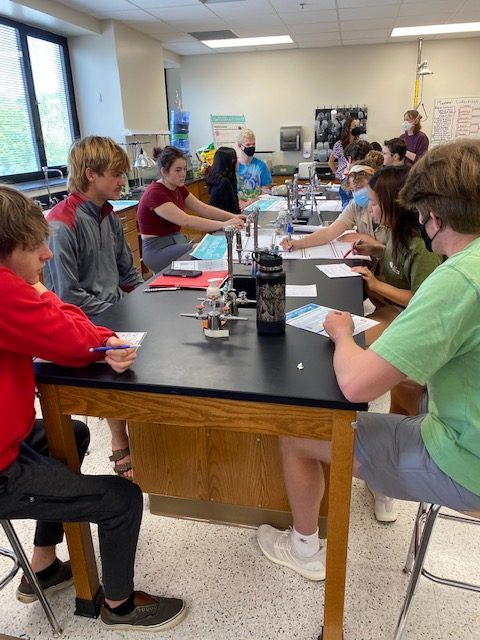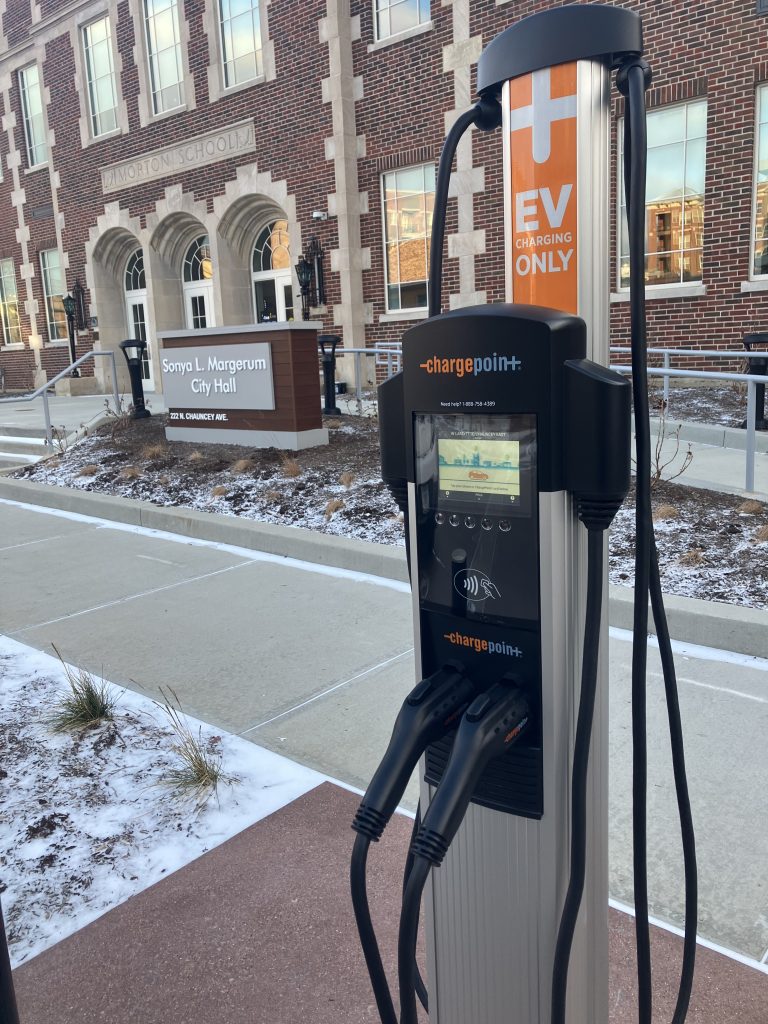BY BRADLEY OPPENHEIM
PHOTOS PROVIDED
In a joint effort, Lafayette, West Lafayette and Tippecanoe County have made it a priority to address climate change and how it’s making an impact here in our own backyards.
After more than two years of gathering scientific data and input from the public, the Greater Lafayette Climate Action Plan maps out both current and projected climate challenges and how we can take action now in creating a more sustainable Greater Lafayette for years to come.
Margy Deverall represents the city of Lafayette as a member of the plan’s Joint Leadership Committee, which was responsible for managing efforts to model the plan. “We are already experiencing change. We see more extreme heat days in summer, flooding events, poor air quality, among other things,” she says. “The plan looks at ways to address those making the community more resilient. We also look at energy costs and changes in where our energy comes from. Planning ahead for those likely changes makes us more sustainable.”
According to Deverall, the city of West Lafayette kicked things off several years ago when it began working with Indiana University’s Environmental Resilience Institute (ERI), which works with partners throughout the state in confronting environmental change through research, education and community collaboration. Soon after West Lafayette began pursuing studies, leaders in Lafayette pondered their own plan, reaching out to leaders on the other side of the river, seeking advice and information about IU’s ERI.
“The first thing we did as members of the IU Environmental Resilience Institute (ERI) Cohort Program, was gather information to determine our current greenhouse gas emissions (amounts and sources),” Deverall says. “Going forward, that can be remeasured, and we can see how we have improved on that number.”
Ultimately, the two cities decided to pool their resources and combine efforts. “The climate doesn’t stop at the river,” Deverall says. “The climate doesn’t stop at the city limits either.” Tippecanoe County also was invited to join in the effort.
Working with a shared vision, the three entities split costs and hired Greeley & Hansen, an environmental engineering firm, to help construct a plan and gather public input.
Once planning meetings were underway, the Joint Leadership Committee worked alongside Greeley & Hansen, interns and fellows from both Purdue and Indiana universities, gathering data. An Advisory Committee also was established, made up of community members and content specialists, tasked with providing input and expertise. In addition to these committees, hundreds of Greater Lafayette residents played a crucial role in providing their input through online focus sessions and in-person meetings.


“We garnered resident feedback and input, and by doing so, the public can look to this plan when holding government accountable and continue to raise awareness about environmental issues,” says Michael Thompson, a Joint Planning Committee member representing Tippecanoe County. “If residents have been seeking an opportunity to get involved, now is the time.”
Fellow Joint Committee Member Lindsey Payne, an assistant professor of practice in environmental and ecological engineering at Purdue University and member of West Lafayette’s Go Greener Commission, shares the same mindset as Thompson. “Climate action is about community health and wellness and creating a better, more sustainable, resilient, and equity future for all,” Payne says.
The framework leading up to implementation of the plan was split into five program phases: initiation, development, execution, report development and implementation.
“Many, many people have been supportive of this effort, and almost everyone has commented that community leaders should be taking action quickly,” says Amy Krzton-Presson, watershed coordinator for the Wabash River Enhancement Corporation and Joint Leadership Committee member. “They want to know that our local government and industry leaders value these initiatives enough to act on them now. Planning is important, but it is time to take action and the public wants to see that action now.”
Following copious amounts of man hours spent planning, advocating and gathering data, the plan was finalized and made available to the public earlier this year. “As individuals, we truly can build the community we want to live in, we just have to make that commitment, act and support each other in our efforts,” Payne says. “It is really about the community coming together to shape this future for themselves and their future generations.”
Statistics also are embedded throughout the plan, putting the effects of climate change in perspective. For example, by the 2050s, it’s projected that the hottest day of the year in Tippecanoe County could soar to 105 degrees, which is 10 degrees warmer than the hottest day of the year during the 1970s to 2000s. On the opposite spectrum, it’s projected that the coldest day of the year will drop to -3 degrees, and while that’s bone-chilling cold, it’s still 10 degrees warmer than the average coldest day of the year between the 1970s and 2000s, which was -13 degrees. While studies were carried out for each of the three communities, the results were presented on a county-wide basis.
“Climbing temperatures aside, the plan helps outline how we as a community can be more resilient and identify those who are at greatest risk — the elderly, young, health impaired, low income, etc.,” Deverall says.
Funding also is addressed, where it’s noted that implementation of many of these projects will save taxpayer dollars in the long run. According to the plan, several community-wide programs can be funded through grants and programs at all levels of government.
In conclusion, a checklist cites specifics in each focus area as to how residents can play a part in reducing greenhouse gas emissions, ranging from keeping your thermostat one degree cooler in the winter to planting trees on your property.
Halee Griffey is a climate resiliency and sustainability officer for the city of West Lafayette. Part of her role includes implementing the plan. She says collaboration plays a crucial role in the equitable, comprehensive implementation of the plan.
“I am feeling very fortunate to have had the opportunity to collaborate with departments, commissions and committees of the city of West Lafayette, government partners from the city of Lafayette and Tippecanoe County, local community organizations, private businesses and engaged residents as well as state leaders in climate action,” says Griffey. “Although the plan has already been adopted, early-stage implementation continues to involve a notable amount of planning. More specifically, not all actions are created the same, and efforts are being made to prioritize and plan for both short-term and long-term goals in terms of partnership development, timeline creation and resource allocation.”
While there is no simplified version of the plan, Deverall encourages everyone to invest the time to read through it thoroughly, “You can skip to the end and read the suggestions under implementation,” she says. “But not going over the data we spent two years gathering is a pretty poor way to acknowledge all the work we did for the community.” If they haven’t already, residents are encouraged to attend scheduled meetings and to sign up to receive email updates. “Both cities and the county have social media accounts and use local media releases to keep the community in the loop,” Deverall says.
Krzton-Presson says taking these actions needs to happen at every level in our community – individuals, industry, schools, government, churches. Everyone should be working to work and live more sustainably. “Climate planning is an act of hope, preparedness and thinking about the future,” says Krzton-Presson. “Those are all things any community should be thinking about if they want to be active and



